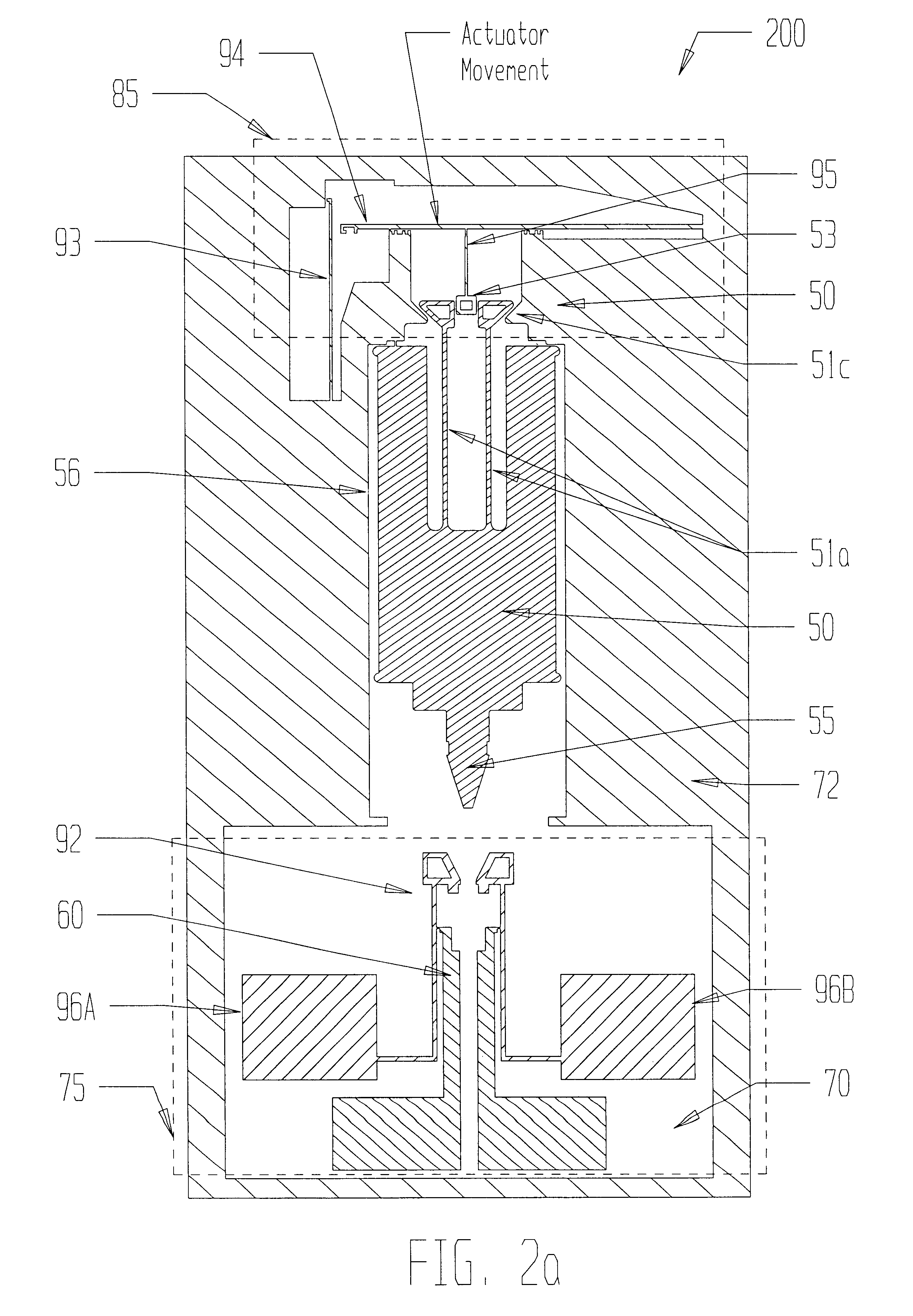Microelectromechanical systems (MEMS)-type high-capacity inertial-switching device
- Summary
- Abstract
- Description
- Claims
- Application Information
AI Technical Summary
Benefits of technology
Problems solved by technology
Method used
Image
Examples
first embodiment
: Referring now to FIG. 1, the invention is shown in a sectional plan view of a MEMS-type unpowered G-switch device 100 with electromechanical enable capability. This switching device comprises an actuator component 52 that provides enablement of the switch device 100, a shuttle member 50, an anchor assembly 51 that includes the following members of anchor legs 51a, anchor feet 51b that are attached to the shuttle member and are shaped to bear laterally against constriction members 51c; and one of several designs of a switching assembly 75. Each constriction member 51c has a cam face that is attached to the substrate 70 and forming part of a raised structural upper section of the MEMS-type device and shown as just one of many "land" structures 72 that form this raised section. After the anchor feet are unpinned by upward movement of a linchpin 53 and out from between the feet 51b, the anchor feet can slide past these constriction members allowing the shuttle 50 to be pulled downward...
second embodiment
the invention can also be used as a threshold G-switching device. In such a design, the linchpin 53 and lift arm assembly 85 are omitted, wherein the anchor foot assembly 51 holds the shuttle 50 in an initial configuration until upward acceleration is applied sufficient enough to pull the anchor feet 51b through the constriction 51c. The accelerating threshold at which the anchor feet pull free is a function of friction, mass of the shuttle, and design of the anchor foot assembly 51.
SWITCHING ASSEMBLIES: Various designs of the switching assembly 75 can be used in either embodiment of the invention. As shown in FIG. 1 (for example) the contact hammers 57a and 57b interact with the shuttle head 55 to close the switch assembly by acting upon the anvil pair 61 and 62. The switching assembly 75 can be a latching single-throw switch of a type being either a normally-open, double pole, single-throw switch or a normally-open, single pole, single-throw switch.
Referring now to FIGS. 3 and 4, ...
PUM
 Login to View More
Login to View More Abstract
Description
Claims
Application Information
 Login to View More
Login to View More - R&D
- Intellectual Property
- Life Sciences
- Materials
- Tech Scout
- Unparalleled Data Quality
- Higher Quality Content
- 60% Fewer Hallucinations
Browse by: Latest US Patents, China's latest patents, Technical Efficacy Thesaurus, Application Domain, Technology Topic, Popular Technical Reports.
© 2025 PatSnap. All rights reserved.Legal|Privacy policy|Modern Slavery Act Transparency Statement|Sitemap|About US| Contact US: help@patsnap.com



